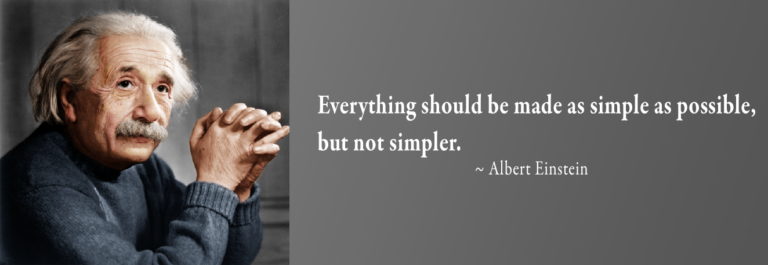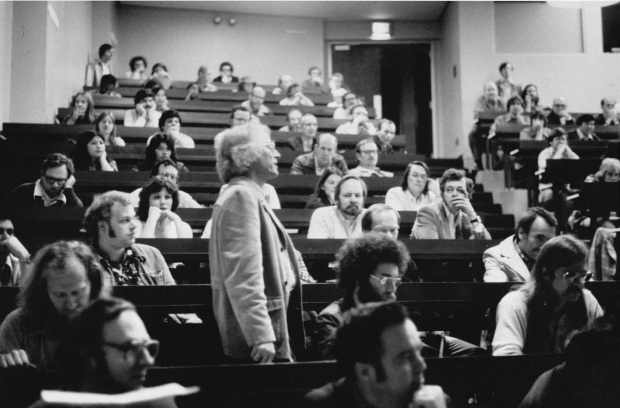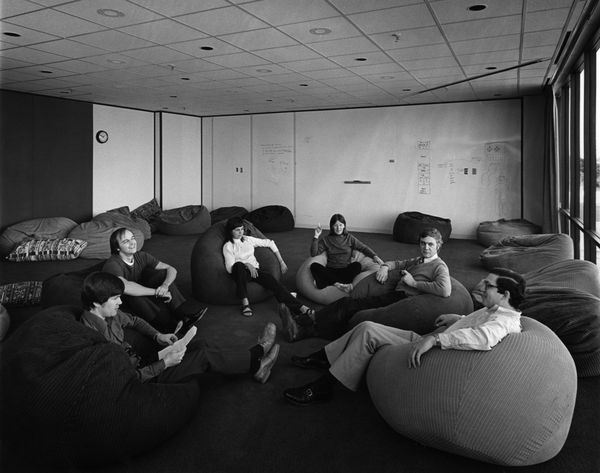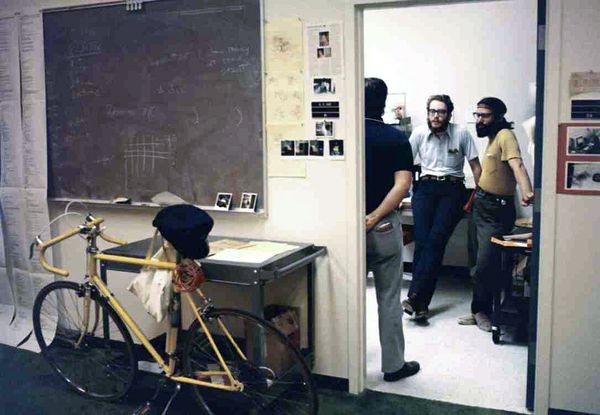
The Best Methodology
There is a big distinction between a shortcut, taking the easy path, and making something simple. The shortcut is a technique used for getting there faster. But that doesn’t make it a sound, certain road to success. A shortcut is a desire for the outcome without all the barriers and obstacles one might encounter.
Easy denotes the absence of difficulties, struggles, and pitfalls because the roadblocks have already been overcome. usually, the optimum solution has already been discovered by another through arduous trial and error. However, this does not help one in developing the abilities necessary for potential future endeavors.
Simple is the path of least resistance. It is uncomplicated, and sometimes seemingly unsophisticated. But this only happens after stepping into the unknown to see what lies ahead.

And in terms of which one Disruptors prefer, it is always the simple path. But until they discover which path is the right one, simple won’t come until later.
Think of it like a magic trick. As an observer, you are amazed at what is happening before you. It’s completely illogical to your rational brain. It seems almost impossible. How could he know which is my card? How did that quarter get inside a closed soda can? How did the piece of paper with my name written on it appear on the other side of a solid sheet of glass?
But once you’ve figured out the secret, you realize how simple and elegant it really is.
Choosing the Right Path

Asking how Steve Jobs came up with the concepts for Apple and Pixar is another way to look at this. or understanding the process Bill Gates developed in creating MS-DOS for IBM. Or how the Google guys, Page and Brin developed their search engine, or when Zuckerberg saw the potential for Facebook. And what led Einstein to his conclusions about relativity? Alternatively, how did Michael Faraday see electromagnetism in a way no one else could? What was Philo Farnsworth’s thought process when he discovered how to transmit images as waves into the atmosphere to be perfectly reproduced and seen on a screen thousands of miles away?
Naturally, there were no shortcuts or easy solutions, but every one of them worked to make their concept, idea, or invention as straightforward and simple as possible.
How about you? Can you do simple? Are you doing simple now?
Understanding Simple
Before we can begin to answer that question, you first have to look at what your motivations are.
I’ve mentioned in the past that money and ego are not good drivers for motivation or inspiration. They can keep you stuck, limited, and frustrated.
In order to find the best path toward Disruptive thinking, the concept of simple requires that one be open to cultivating their own unique Visionary style.
No one can dispute that Disruptors each had their own unique Visionary style of seeing the world. In fact, we know through learning about their experiences that their visionary ideas were not always immediately recognized or understood. But once they were, well… the rest is history, as they say.

Simple is not what you will get in the beginning, but it should be where you are heading to. Going back to the example of Steve Jobs and the personal computer, there are two things we can learn that give us insight into becoming our own Visionary Genius, using simplified methods toward our own creative endeavors.
When developing his version of the personal computer, Steve Wozniak was simply playing, figuring out, and exploring the possibilities. His driver and motivation were, “What happens if I do this?” Wozniak was a true experimenter. He was tinkering, yet he had the skills and understanding of what he was tinkering with. When his ‘computer’ screen displayed exactly what he was typing on the keyboard, Steve was filled with giddy excitement. And when he later got color for the Apple II, that changed the game entirely.
“Putting color in the computer was probably one of the biggest things I ever did”, he says. “Nobody expected color to come into a computer because color machines cost a thousand dollars.” “I figured out a way to do it with one little $1 chip”. He saw the technique Atari used to simulate colors on its first arcade games, and he thought it would be great to find a way to do real colors with pixels through a chip on a personal computer.
In June of 1971, for a self-taught engineering project, Wozniak designed and built his first computer with his friend Bill Fernandez. Predating useful microprocessors, screens, and keyboards, and using punch cards and only 20 TTL chips donated by an acquaintance, they named their computer “Cream Soda” after their favorite beverage. A newspaper reporter stepped on the power supply cable and blew up the computer, but it served Wozniak as a good prelude to his thinking 5 years later with the Apple I.

When he first figured out how to make his ‘personal’ computer work, he not only made it work in a simple, basic way, but the user interface was also simple. He wanted to give his concept away. He looked at it as a fun experiment that he could share with the Homebrew Computer Club in Palo Alto, which he, Jobs, and Gates belonged to.

It was Steve Jobs who saw its future, and the potential for something that was life changing.
But Jobs also saw the beauty of simple where others couldn’t.
At the time, computers were these big, cumbersome things that took up entire rooms of equipment just to turn out a printed card that then had to be transcribed or decoded.
But when Wozniak came up with his idea, the game changed. And later, in 1979, when Jobs discovered what they had created at Xerox Parc, after being introduced by Jef Raskin, the game changed even more.

At the time, Xerox Parc encouraged its employees to ‘play,’ ‘create,’ ‘experiment,’ and ‘explore,’ to see what ideas and concepts they could come up with. The funny thing is that they had no real endgame for these ideas and concepts.

One of the thoughts behind why Xerox Parc could not immediately see what they had was in the dichotomy between the short-term needs to make a profit, and the idea of attracting unfettered individuals free to design, create, invent, and develop. They were allowed the freedom to create without restriction or monetary aims. In this way, they were playful philosophers of the burgeoning computer age given a blank canvas on which to paint.

If you think about it, the best analogy for Xerox Parc is the creation of gasoline. When Rockefeller had his team of scientists figure out if they could develop, utilize, and refine the waste that was left over from the crude oil they used to make kerosene, they came up with gasoline. But since there were no real uses for gasoline just yet, the byproduct was used for other concepts such as perfumes, fertilizers, paraffin candle wax, lip balm, electrical insulators, vitamins, detergents, tar to make asphalt for paving roads, insecticides, pen ink, paraffin for candles, and petroleum jelly to make medical supplies.
In other words, Rockefeller saw something more than just a waste runoff, as Jobs too, saw how to utilize these great concepts that the inventors at Xerox Parc labs had created. Each concept on its own was unique, but they hadn’t tied them together yet. Jobs, once again, like Ada Lovelace had with Charles Babbage’s Analytical Engine, saw their collective future.
This is what a Visionary does. He or she sees what others cannot yet see. And in order to accomplish this, they need their thinking to be unrestricted, unencumbered, and divergent.
The best way to achieve this is to put oneself in a state of imaginative, playful, creative wonderment. And the way to do that is to not have any restrictions of an endgame.
It could definitely be argued that having an endgame or competition is an important component of creating something new. And we have seen this exampled in ideas like Crispr technology in the race to find a cure for Covid, and the ongoing search to eradicate genes that cause abnormalities in humans.
But here’s the thing with that type of competition. Most companies race to privatize their research in order to a) get control over the process, and b) make the highest profit allowable, while keeping the competition at bay. Yet when shutting down the pathway to an idea in this manner, you remove any possibility for others to contribute or inspire new directions.
Again, each and every major disruption was neither focused on monetary gain nor were they concerned with becoming famous.
But why should you go down a road that doesn’t promise any rewards in the end? What kind of motivation does that offer when you need to earn a living, provide for your family, or survive in a tough world that never for a moment gives you a break?
The only honest answer I can provide is to understand what drives an athlete, a writer, a filmmaker, a clothing designer, an engineer, a scientist, or any other creative who has no proven track record to pursue their objectives.
There are only two reasons. Again, one is monetary reward. That is the driver that alludes to any potential for financial freedom. It is a hard, long road, with no secure outcome or assurances along the way.
But wait! Isn’t that the exact same thing the Disruptor does, going down a long road, with no security or assurances that it will ever yield anything of value?
Where the struggle for simplicity really lies is found in today’s societal need and desire to chase money. Every day we hear about promises of lottery winners, Internet millionaires who made their fame and fortune through online gaming, becoming a supposed “influencer,” or the new hype of making money by playing solitaire or bingo through a gaming app.
We’ve been duped and conditioned into believing that being rich and famous is the most important thing of value today.
The irony is that none of these pursuits helps to develop, grow, or sustain the human species, or provide anything of future value for the planet. How does any of this contribute to our collective future? How does that serve the needs of the many?
The second reason is a driving curiosity to see where something leads. The Disruptor needs to find out what he’s capable of and where his pursuit will take him. Something sparked a thought or idea that drives him or her to figure it out, to understand, to explore beyond the probable into the possible, or sometimes even the impossible.
It’s the moment that nothing turns into something. Suddenly everything changes.
Formula for Knowing
But still, the real question is not being addressed. The big question that needs to be asked is “Why should I want to disrupt?” What purpose or value does it provide?
Great question. And an important one at that.
There are only two reasons someone would want to learn the attributes of a Disruptor.
One is that they are stuck in a rut and need to find a new way to pursue their dreams, goals, and ideas. Or two, they know they are a creative person caught between living life from a rational mindset while figuring out how to access their more creative mind on a grander scale.
The paradox is that we see a world run by big business. And yes, that is a problem. But the majority of big business was actually developed out of someone’s creative, inventive idea. And that’s the part most people, schools, industries, and societies don’t see or teach, nor do they value.
Every major industry was once someone’s creative idea or concept that turned into a business, industry, or way of life.
Harry Potter’s inspiring stories turned into a multi-billion-dollar industry. Stan Lee’s iconic comic heroes also became a multi-billion-dollar industry.
As I mention time and time again, radio, television, trains, planes, automobiles, electricity, medicine, technology, computers, the Internet, phones, and cellular phones were all once someone’s fantasy made into reality.
Or, as Neville Goddard so eloquently put it, “Imaginal acts are what determine the course of history.”
In a nutshell, at the very least, you should be exploring, developing, and defining your intuitive mindset, which is where curiosity, creativity, imagination, invention, and divergent thinking come from.
And while rational thinking (logic, analytical reasoning, conceptual analysis, and practical thinking) has its necessary place, it shouldn’t remain as our primary thinking style, instead, it should be the secondary style of thinking.
Albert Einstein was one of the most simplistic of thinkers, as were Srinivasa Ramanujan, Leonardo da Vinci, Michael Faraday, Nikola Tesla, And Ada Lovelace. There are many others, but these are great examples of simplistic thinkers. They did this through imagery. Before vetting their concepts and ideas, they imagined their creations first. They visualized their ideas through imagery.
Einstein showed us this over and over again. He used examples of a man running beside a beam of light, or a person inside an elevator which drops quickly, allowing the person to temporarily ‘float.’ Or the person on a fast-moving train who witnesses two lightning bolts simultaneously striking both ends of the train.

All of these were ideas based upon using imagery to help explain his concepts. Only later were his ideas researched, vetted, and put into theorems and quantitative formulas.
To begin your journey to becoming a Visionary who sees things in a simplistic yet elegant and personal way, you should consider adopting the following tools: (If you think you already know these, you are already limiting yourself).
Simple Ideas
1: Curiosity. At some point in our adult lives, in order to work, live, and survive in a fast-paced, ever-changing society, we’ve become accustomed to predicting the outcome. This causes us to lose our sense of wonderment. When we think we know what to expect, we no longer have the ability or the opportunity to explore further. Yet when one remains open and curious, it allows for many possible ideas to flourish. A good example of this limited thinking is how we relied on taxis as a primary mode of transportation. It never occurred to us, until Garret Camp figured it out, that rideshare could become a new concept for transportation. This changed so many limiting conditions… Initially, this newer form of transportation became cheaper. It allowed someone to be picked up from anywhere, not just in taxi-designated areas. It connected two unlikely people who otherwise never would have met: driver and passenger. It gave people a new way to make a living. Curiosity keeps us open and always in a place of discovery.
2: Playfulness. Adults have little time and patience for playfulness, yet that is currently what is being encouraged and promoted in many workforces these days. Companies are acutely aware of issues of fatigue being experienced by their employees. They are beginning to realize that all work and no play make Jack (and Jill) unproductive burnouts. By instilling breaktimes fostered with play, creative outlets, and the ability and freedom to imagine, employers are seeing more productivity and better bottom-line results. Playfulness should not just be something to be utilized within a workplace environment. Einstein was silly, messy, and playful, and therefore his creativity remained at a very heightened state. And we know where that got him.
3: Travel. Going to different places, meeting new people, and visiting new lands, cities, states, and countries, allows one to learn, discover, and open one’s mind to new thoughts and ideas. These are the instruments that helped to foster and create concepts like Air BnB, Zipcar, and Uber. One of the best ways to get out of your comfort zone is to travel. You are forced to see life differently. Some of your preconceived notions of how things work (or should work) can be greatly changed.
4: Adventure. Geez… Take the time to go on an adventure, and make sure you do it as often as necessary… Not as often as possible, but as often as necessary. Adventure changes one’s perspective. It opens one’s ideas of what’s possible. It pushes, challenges, and invigorates one’s ideas, philosophies, and capabilities. Adventure is anything that challenges you, ignites your sense of discovery, and changes your perspective on life. A canoe ride, a camping trip, a hike in unexplored territory, learning to sail, to fly a plane, to skydive, or to learn a new skill, anything that challenges and pushes new levels of thought and exploration. Adventure is trying new foods, learning a new language (or part of it). Not being stuck in a rut. Getting out of one’s complacency.
Simple is the most direct and elegant way to live life. And this can be achieved by avoiding things that can cause overwhelm, by learning to recognize when you are trapped in routine, and by forcing yourself to challenge and change stuck, limiting behaviors and old patterns. I’ve mentioned this in a past article but if you are still having trouble understanding how to do this, go for a walk with a four-year-old. You will immediately begin to see the world differently. It’s that simple.
FOOTNOTES:
1: Steve Wozniak – Wikipedia: https://en.wikipedia.org/wiki/Steve_Wozniak
2: What Really Happened: Steve Jobs @ Xerox PARC ’79:
https://livingcomputers.org/Blog/What-Really-Happened-Steve-Jobs-@-Xerox-PARC-79.aspx